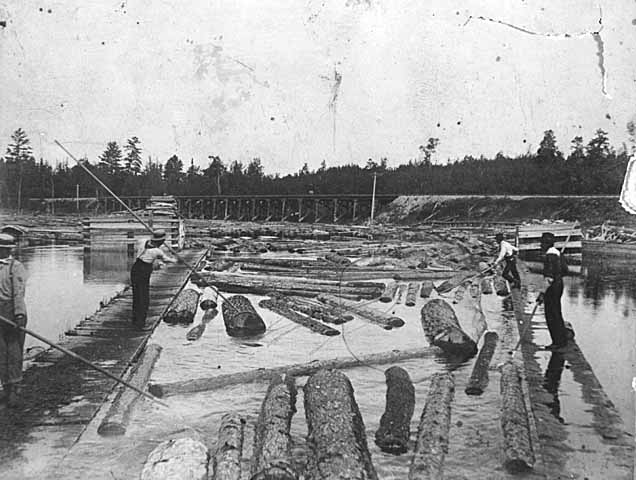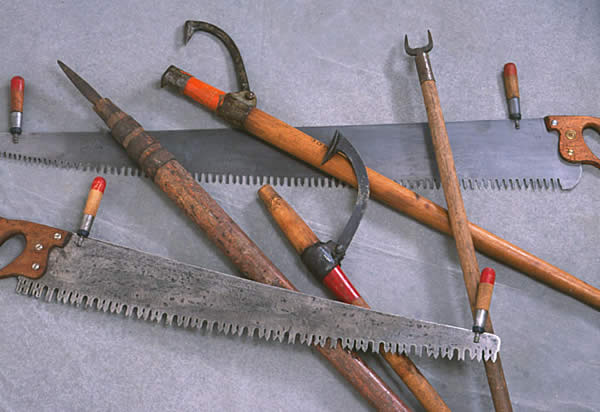How Did They Get All Those Logs down Such Skinny Rivers?

Sluicing at Pokegama Dam on Mississippi River, ca. 1900.
Minnesota Historical Society Photograph Collection, Location No. HD5.41 p66 Negative No. 24805
"Many people marvel that huge masses of logs were driven down such puny rivers as Little Willow and Moose River. In summer time, these streams are only about 10 feet wide. Successful driving of such small streams was made possible by the construction of one or more log and earth work dams. By controlling the gates of these dams, enough water was impounded, and then judiciously released, to carry the logs down the river."
Joseph DeLaittre, A Story of Early Lumbering in Minnesota (Minneapolis: DeLaittre Dixon Co., 1969).
Who Was the Crew?

Log drivers on the Big Fork River.
Minnesota Historical Society Photograph Collection, Location no. HD5.41 p3 Negative no. 896
"The drive has three crews: the driving crew stays in front to shepherd the logs; the rear crew stays behind to find wayward logs; and the jam crew breaks log jams in the middle. No other part of the lumbering process is as difficult, miserable, or dangerous. Death in the nearly-frozen water is a regular event."
—History of the White Pine Industry in Minnesota
Agnes M. Larson, History of the White Pine Industry in Minnesota (Minneapolis: University of Minnesota Press, 1949).
What Are Those Poles?

Lumberjack and log driving tools including: saws, pike poles, and peavies.The pike pole is the one with the single pointy tip. The hooks are cant hooks and the pole they're on is a peavey.
Minnesota Historical Society Museum Collections
Drivers had two jobs on the river. One was to keep the logs moving even though they wanted to jam up. They used these metal-tipped pikes to push and prod logs out of the little jams that were a constant on the river.
The second job of a riverman was to stay alive. A fall into the water was always dangerous: if you didn't drown, the logs could always crush you or the cold could freeze you. The pikes helped a riverman keep his balance as he moved from log to log.
Agnes M. Larson, History of the White Pine Industry in Minnesota (Minneapolis: University of Minnesota Press, 1949).

